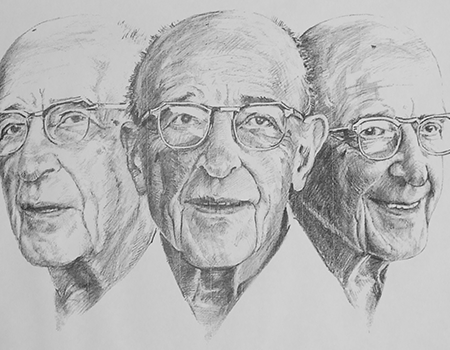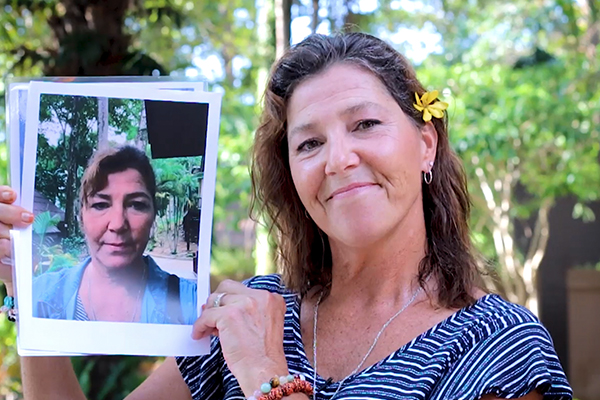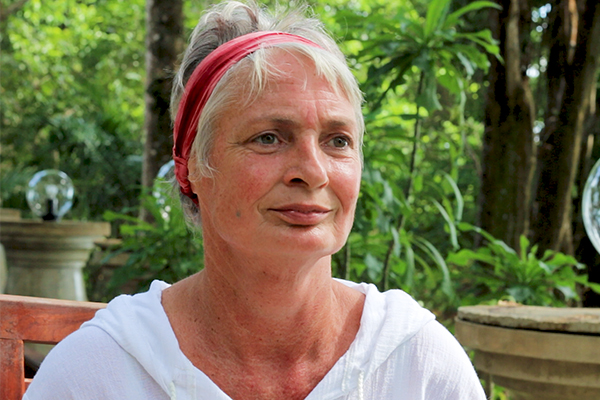
JOCELYN MERCADO
PhD (Psychology), RGC, CCLP, CASP, CCOP
Officer In Charge & Senior Clinical Psychologist – DARA Koh Chang
CLASS DISCUSSION

One of the first questions I always ask my psychology students is “What’s the most important aspect of counselling and psychotherapy?” Almost always my college students will say, “The counsellor’s skills and techniques”, but my graduate students will say “The Counsellor’s knowledge and experience…” I guess they are both right in implying that the most important aspect of counselling and psychotherapy is the counsellor themselves!
Then the next question is, “What makes an effective counsellor or therapist?” Carl Rogers, one of the most seminal psychologists of the last century, postulated that, in order for therapeutic growth to take place three conditions are necessary:
- First, an anxious or vulnerable client must come into contact with a congruent therapist who also possesses empathy and unconditional positive regard for that client. To be congruent, according to Rogers, means the counsellor is genuine and true to himself and his client. Congruent counsellors are in touch with their feelings and are emotionally present. They do not act as though they were something that they are not.
- The second condition is unconditional positive regard. This means that they are “experiencing a warm, positive and accepting attitude toward what is the client” (Rogers, 1961). Unconditional positive regard means that therapists accept and value their clients without any restrictions or reservations no matter who the client is or what they have done. The third necessary and sufficient condition for psychological growth is empathic listening. To Rogers (1980), empathy means, “temporarily living in the other’s life, moving about in it delicately without making judgments”. Empathy suggests that a therapist sees things from the client’s perspective rather than the therapist’s perspective, and that the client feels safe and unthreatened.

Does ‘Person Centered’ therapy approach still postulated by Rogers
still works in the modern era?
A huge body of research on the subject of what works for clients was quoted in the book “The heart and Soul of Change”1. In one study, 16 therapists were assigned clients with similar levels of therapeutic complexity. After 25 sessions, the client’s of therapists who demonstrated more positive regard (in terms of warmth, understanding and affirmation) showed better treatment outcomes. Hundreds of studies have found that when asked, clients ascribe the effectiveness of their therapy more to the quality of the relationship they have with their therapist, than to the particular techniques or methods used. This relationship is commonly referred to as the ‘Therapeutic Alliance’ and it have been shown to be on of the strongest predictors of successful change in therapy.2
FORGING THE ALLIANCE
To sum up what hundreds upon hundreds of research studies convincingly report, what works in general and what consistently predicts good psychotherapy outcome are:
- Empathy. “The therapist’s sensitive ability and willingness to understand client’s thoughts, feelings, and struggles from their point of view.”
- Alliance. “The quality and strength of the collaborative relationship between client and therapist.”
- Goal Consensus. Therapist-client agreement on treatment goals and objectives.
- Positive Regard. “The therapist’s warm acceptance of the client’s experience without conditions and reservations.”
- Congruence or Genuineness. “Therapist’s personal integration in the relationship and capacity to communicate his or her personhood to the client as appropriate.”
BARRIERS TO SUCCESS
So we know what works to build the alliance, but what type of things can break it? A large body of research literature outlines several key tactics that should be avoided in the therapy setting.
- Confrontations. Controlled research trials, particularly in the field of addictions showed that confrontational style is ineffective. In a review conducted by Miller, Wilbourne, & Hettema (2003), confrontation was found ineffective in all 12 identified trials.

- Negative Processes. Research studies involving clients warn therapists to avoid comments or behaviours that are hostile, pejorative, critical, rejecting, or blaming.
- Assumptions. Therapists are not to assume they know what their client’s underlying issues and perceptions are. When it comes to the problem or presenting issues, the client is the expert. Therapists who respectfully inquire and allow clients to narrate their story enhance the therapeutic alliance.
- Therapist Centricity. Counselling or psychotherapy that relies on the therapist’s perspective and interpretation does not predict outcome. Allow the therapy session to be about the client’s experience and interpretations. After all, the client is the client and the session is about the client!

- Rigidity. “No size fits all.” The same notion works in psychotherapy. Inflexibility and excessive structuring limits empathy and therapeutic alliance. Do not put any client in a box. Whatever therapy approach or techniques needed depends on the client’s needs and goals.
- Ostrich Behaviour. Ostriches bury their heads in the sand to avoid danger. Many therapists bury their heads and hope not to see early ruptures in the working alliance. Addressing these ruptures is challenging but will yield effective outcomes when done with care and empathy.

- Procrustean bed. The efficacy and effectiveness of psychotherapy depends on tailoring the treatment according to clients’ unique needs and background. The approach also needs to be reviewed and modified according to client’s continuing progress while in treatment.
References Cited:
Corey, G., Flemming, M., Britt, S., Jaramillo, R., Director, C., Hugel, R., … & Hollingsworth, J. (2009). Theory and practice of counseling and psychotherapy. Thomson Brooks/Cole, USA.
Duncan, B. L., Miller, S. D., Wampold, B. E., & Hubble, M. A. (2010). The heart and soul of change: Delivering what works in therapy. American Psychological Association.
Feist, J. & Feist G., (2008). Theories of Personality, Seventh Edition. The McGraw−Hill
Companies, United States of America
Orlinsky, D. E., Ronnestad, M. H., & Willutzki, U. (2004). Fifty years of psychotherapy process-outcome research: Continuity and change. Bergin and Garfield’s handbook of psychotherapy and behaviour change, 5, 307-389.
Latest posts by Darren Lockie (see all)
- Cocaine burnout - February 25, 2020
- What is pathological lying? - February 21, 2020
- Ireland’s growing drug problem - January 20, 2020
+66 8 7140 7788









